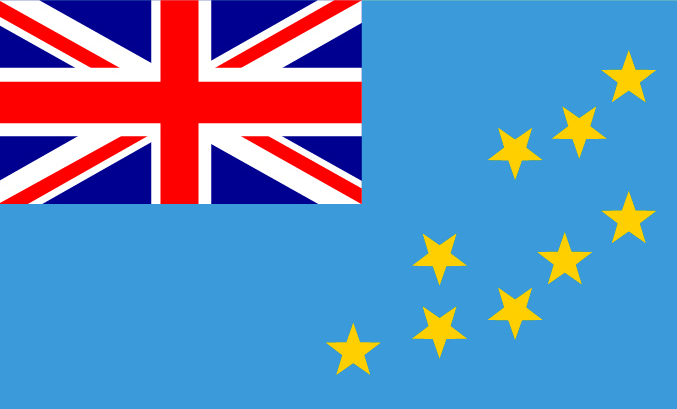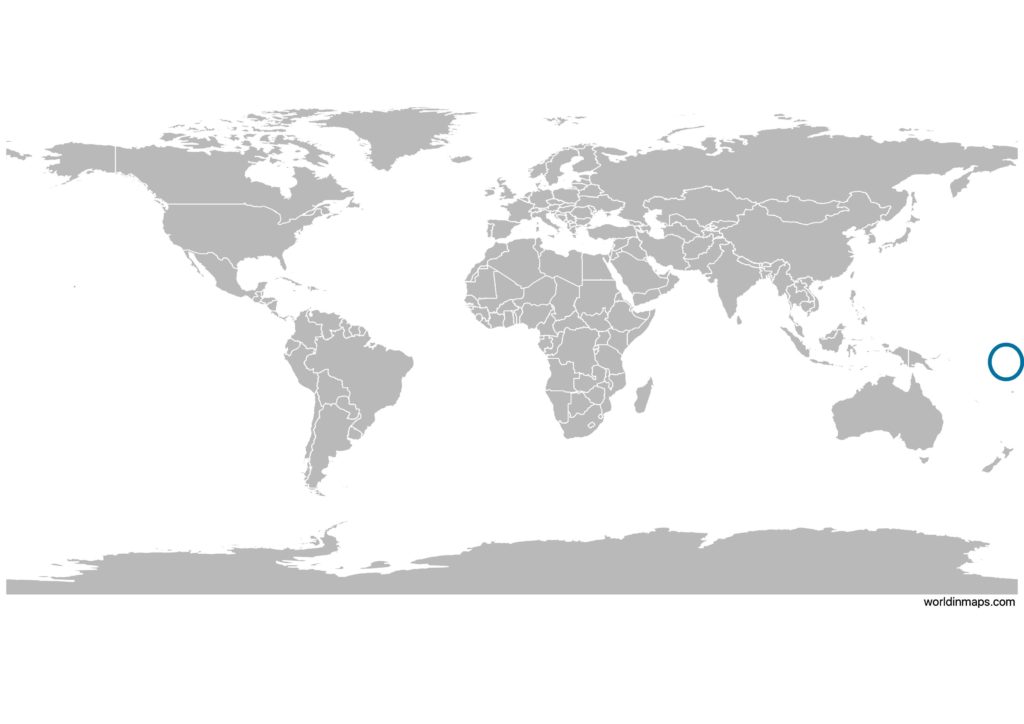Tuvalu

| Government | |
| Name | Tuvalu |
| Government type | parliamentary democracy under a constitutional monarchy (a Commonwealth realm) |
| Capital | Funafuti (6,320 (2017)) |
| Currency | Tuvaluan dollar (TVD) Australian dollar (AUD) |
| Organization | |
| Member State | Commonwealth of Nations |
| People | |
| Population (2020) | 11,792 (229th) |
| Density of population | 475.88 P/km2 (227th) |
| Nationality | Tuvaluan |
| Official languages | |
| Tuvaluan | |
| English | |
| Ethnic groups (2012) | |
| Tuvaluan | 86.8% |
| Tuvaluan / I-Kiribati | 5.6% |
| Tuvaluan / other | 6.7% |
| other | 0.9% |
| Religions (2012) | |
| Protestant | 92.4% |
| Congregational Christian Church of Tuvalu | 85.7% |
| Brethren | 3% |
| Seventh Day Adventist | 2.8% |
| Assemblies of God | 0.9% |
| Baha’i | 2% |
| Jehovah’s Witness | 1.3% |
| Mormon | 1% |
| other | 3.1% |
| none | 0.2% |
| Life expectancy (2020) | |
| Male | 65.6 years |
| Female | 70.2 years |
| Total population | 67.9 years (178th) |
| Homicides | |
| Total (2012) | 18.6 per 100,000 people (21st) |
| Geography | |
| Land area | 26 km2 |
| water area | 0 km2 |
| total area | 26 km2 (238th) |
| Mean elevation | 2 m |
| Lowest point | |
| Pacific Ocean | 0 m |
| Highest point | |
| unnamed location | 5 m |
| Land use (2011) | |
| Agricultural land | 60% |
| Arable land | 0% |
| Permanent crops | 60% |
| Permanent pasture | 0% |
| Forest | 33.3% |
| Other | 6.7% |
| Urbanization | |
| Urban population (2020) | 64% |
| Rate of urbanization | 2.27% annual rate of change (2015 – 2020) |
| Economy | |
| Labor force (2004) | 3,615 (225th) |
| Labor force by occupation | |
| note: most people make a living through exploitation of the sea, reefs, and atolls – and through overseas remittances (mostly from workers in the phosphate industry and sailors) | |
| Unemployment rate | NA |
| GDP (PPP) (estimate 2016) | |
| Total | $39 million (226th) |
| Per capita | $3,566 (156th) |
| GDP (nominal) (estimate 2016) | |
| Total | $32 million (194th) |
| Per capita | $2,970 (118th) |
| GDP by sector (estimate 2012) | |
| Agriculture | 24.5% |
| Industry | 5.6% |
| Services | 70% |
| Exports (2010) | $600,000 (220th) |
| Exports partners (2017) | |
| US | 18.2% |
| Bosnia and Herzegovina | 17% |
| Fiji | 14.8% |
| Nigeria | 14.2% |
| Germany | 8.2% |
| South Africa | 5.9% |
| Colombia | 5.1% |
| Imports (2018) | $20.69 billion (74th) |
| Imports partners (2017) | |
| Singapore | 33.4% |
| South Korea | 11.5% |
| Australia | 10.8% |
| NZ | 8% |
| Fiji | 7.5% |
| Chile | 6.1% |
| South Africa | 5% |
| Japan | 5% |
Tuvalu on the world map

Demography
Age structure data
Estimate for 2020:
- 0-14 years: 29.42% (male 1,711/female 1,626)
- 15-24 years: 17.61% (male 1,031/female 966)
- 25-54 years: 37.17% (male 2,157/female 2,059)
- 55-64 years: 9.12% (male 427/female 607)
- 65 years and over: 6.68% (male 289/female 469)
Remark: the age structure of a population affects a nation’s key socioeconomic issues. Countries with young populations (high percentage under age 15) need to invest more in schools, while countries with older populations (high percentage ages 65 and over) need to invest more in the health sector. The age structure can also be used to help predict potential political issues. For example, the rapid growth of a young adult population unable to find employment can lead to unrest.
Population from 1950 to 2020
Source: United Nations, Department of Economic and Social Affairs, Population Division (2019). World Population Prospects 2019, Online Edition. Rev. 1.
Economy
Agriculture:
coconuts; fish
Industries:
fishing
Exports – commodities:
copra, fish
Imports – commodities:
food, animals, mineral fuels, machinery, manufactured goods
Time zone and current time in Tuvalu
Go to our interactive map to get the current time in Tuvalu